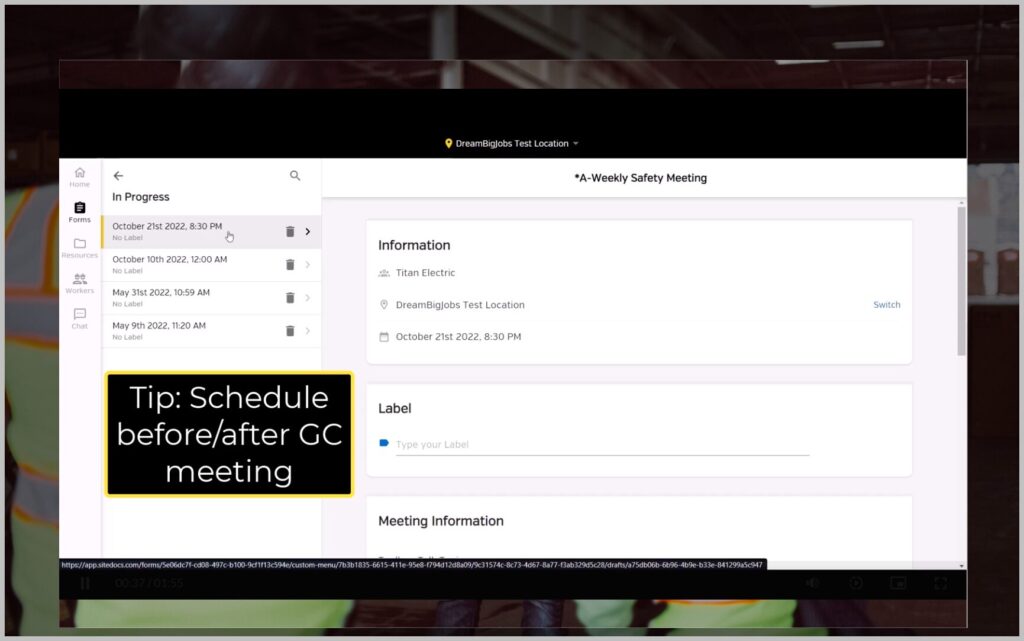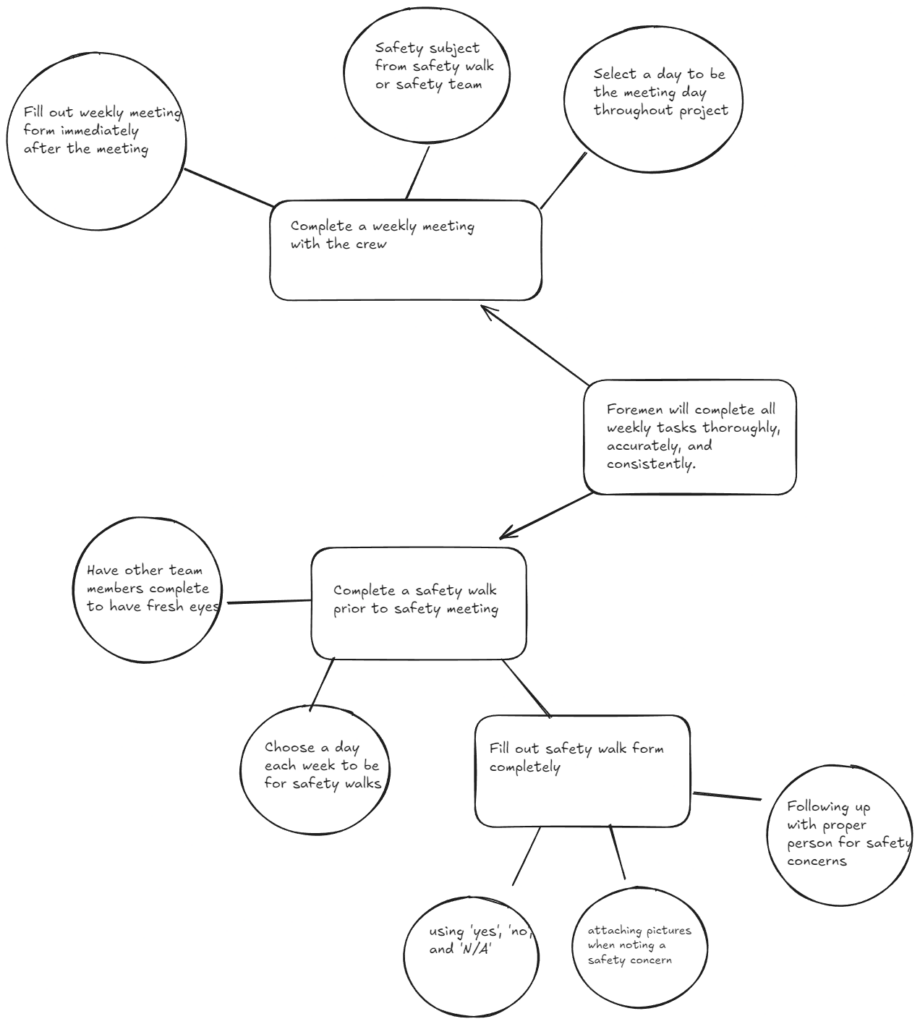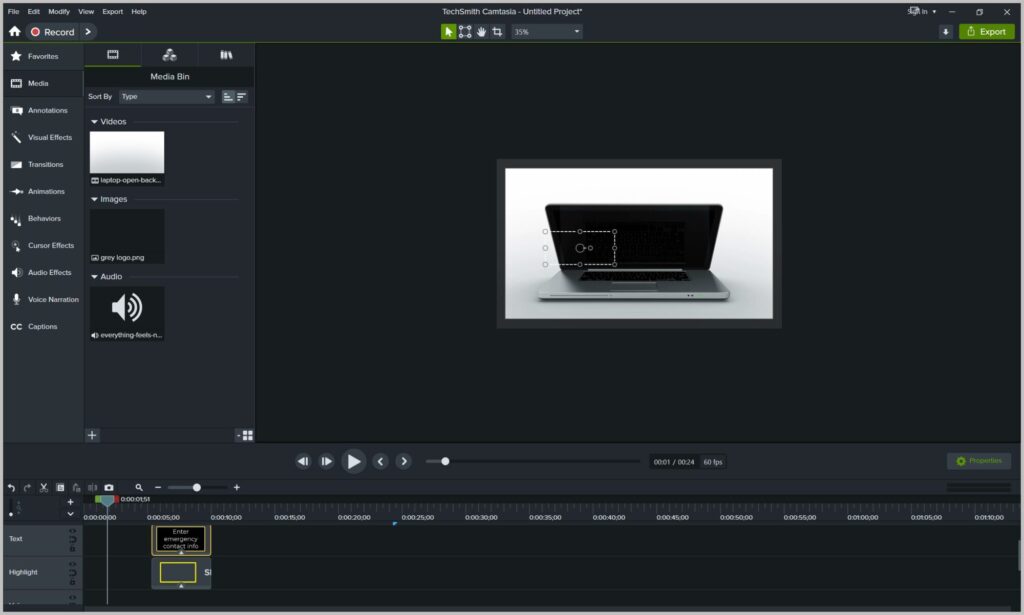I designed this program to onboard foremen – new and current – on company expectations for weekly duties.
Audience: Foremen at electric company
Responsibilities: Analysis, Instructional Design, eLearning Development, video production, voiceover
Tools Used: Camtasia, Snagit, Articulate Storyline, Audacity, Google Suite
ID Models Used: Mayers 12 Principles of Multimedia Design, SAM
Overview
Procedures play a critical role in businesses for various reasons, including project tracking, document management, and, in this case, ensuring employee safety and compliance with local laws.
This client lacked standardized procedures, leading to inconsistencies as each foreman and project manager operated with their own methods. The project aimed to address this by developing an onboarding program for new employees, ensuring alignment with the desired procedures. Additionally, training was designed to equip all employees with a clear understanding of these standardized practices, fostering consistency across the organization.

In this learning experience, participants explored the procedures for weekly meetings and documentation, gaining a clear understanding of not just the how but the why. We emphasized why following these procedures is critical to the success of the business, connecting the dots between everyday actions and long-term outcomes.
To make it real and relatable, we incorporated actual issues that had arisen on job sites due to missed or improperly completed procedures. Participants saw firsthand the ripple effects of these mistakes and the tangible consequences they brought. By grounding the session in real-world examples, we turned abstract concepts into meaningful lessons participants could connect with and apply.

At the end of the module, participants worked hands-on with photos taken from actual job sites. Using a walkthrough form similar to what they’d use on the job, they identified problem areas in the photos and documented them accordingly. This exercise brought the procedures to life, giving them a chance to practice in a realistic context.
On top of that, they answered targeted questions about the procedures and practices covered in the explainer video. This reinforced key concepts and ensured they could connect the dots between the theoretical knowledge and its practical application. It wasn’t just about understanding—it was about getting them ready to apply what they’d learned.
Process
To ensure the content was accurate and relevant, I collaborated closely with a subject matter expert (SME) and an additional stakeholder to define the procedures they envisioned for the foreman track. Together, we explored the “why” behind each procedure, tying them to real-life examples from job sites to emphasize their importance and practical application.
They also provided me with copies of the relevant documents, which I incorporated into the informational video to give participants authentic materials they’d recognize and use on the job. This collaborative process ensured the learning experience was grounded in both expertise and real-world context.
My workflow involved a structured approach that allowed me room for creativity when designing the eLearning experience:
-
Defining Goals: Using action mapping in Excalidraw, I outlined clear, actionable objectives to ensure the learning experience focused on real-world outcomes.
-
Storyboarding Interactions: I mapped out the interactions through a combination of visual and text-based storyboarding in Google Docs, aligning the flow and content with the defined goals.
-
Designing Tone and Visuals: Through iterative prototyping in Affinity Designer, I refined the eLearning tone, visual style, and functionality, ensuring they aligned with both the learning objectives and audience needs.
-
Developing the Product: Finally, I brought the concept to life by creating an interactive prototype and the final product in Storyline 360 and Camtasia, seamlessly integrating all elements into an engaging and functional eLearning experience.

Outline
After completing the action map, I created a detailed text outline for the explainer video. This included the order of steps for the procedure, all on-screen text, a full script for the voiceover, and concise descriptions of the visual elements needed for each scene. This comprehensive outline served as a blueprint, ensuring that the video effectively communicated the procedures while aligning with the learning goals and maintaining a cohesive visual and narrative flow.

Text Storyboard
To streamline the development process, I created a detailed visual storyboard. This document outlined the text for each slide, specified animations and triggers, and detailed any custom visuals needed beyond the standard template established at the project’s start. By mapping out these elements in advance, the storyboard ensured a smoother workflow and kept the eLearning experience cohesive, engaging, and aligned with the project’s goals.

Prototype
Once the storyboard and outline were finalized, I transitioned to the development phase. The explainer video was created in Camtasia, where I brought the script and visuals to life with a polished, professional finish. Simultaneously, I developed the eLearning module in Articulate Storyline 360, integrating interactivity, animations, and the content mapped out in the storyboard to deliver an engaging and effective learning experience.

After completing the initial development, I sought feedback from designers, peers, and SMEs to ensure the eLearning experience met the highest standards. The feedback covered details like the hover states of buttons, trigger functionality, and the smoothness of slide transitions between settings. I carefully evaluated each piece of feedback, implementing relevant suggestions to refine the design and improve the overall user experience. This collaborative review process ensured the final product was polished, functional, and engaging.
Results and Takeaways
This was the largest project I had undertaken at the time, encompassing the development of over 30 Articulate Storyline 360 courses as part of the initiative. Looking back, the process went remarkably smoothly, and I credit the detailed planning and preparation done before diving into development for that success.
However, this project also came with a learning curve—it was my first time using Camtasia. Tackling this new tool meant dedicating hours to tutorials and forums to get a solid grasp of its features. While it was challenging at first, the effort paid off, and I’ve now gained confidence in my video editing skills with Camtasia. It was a valuable learning experience that added another skill to my toolkit.